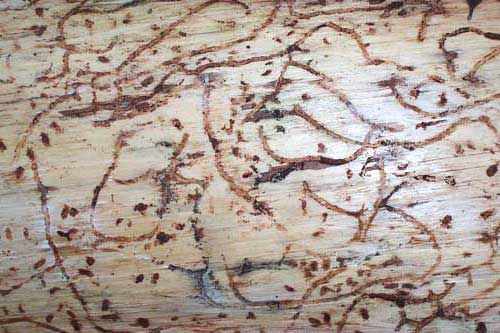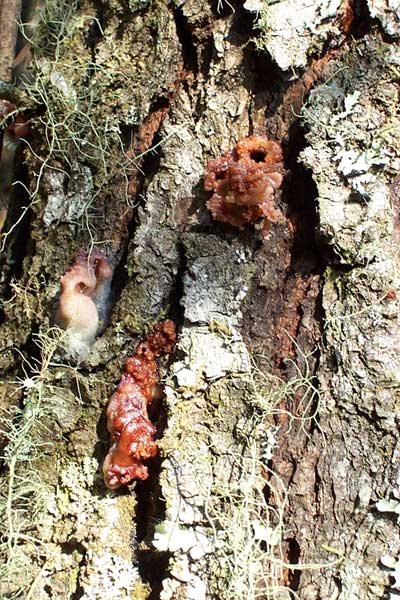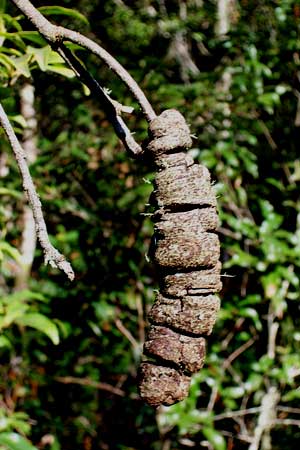Excerpts from Jim Conrad's
Naturalist Newsletter
from the December 29, 2006 Newsletter issued from Sierra Gorda Biosphere Reserve, QUERÉTARO, MÉXICO
BARK BEETLES IN THE PINES
On Wednesday, December 20th, Beto invited me on a trip into the mountains to visit a site where bark beetles were killing large numbers of pines in an important holding of the Reserve. The Reserve is having men cut trees in a broad swath in an effort to stop the beetles' advance. It's like cutting a firebreak in the hope of bringing to a halt an approaching forest fire. When Beto was a student he'd heard that loggers were about to cut this pristine forest so he and 40 friends pooled their resources and saved the forest by buying it. Now bark beetles are doing what the loggers didn't.
There in the northeastern corner of Querétaro state between 6000 and 6900 feet (1800-2100 m) the forest is predominantly Oak, QUERCUS AFFINIS, and pine, PINUS GREGGII. Arriving at the cutting zone three local fellows already had cleared a good bit, and debarked pine trunks lay in piles stacked three and four logs high -- a major feat since the men worked without machinery or mules. The white, debarked pine trunks were very heavily ornamented with brown arabesques -- the beetles' deadly tracings. You can see what that looked like below:

Nearby trunks of standing pines were perforated with holes that oozed resin. You can see some oozy holes with their typical resin chimneys below:

What's even worse is that the oaks are succumbing as well as the pines. A fungus causes finger-sized growths on the twigs. I'm guessing that these growths prevent food photosynthesized in the leaves from reaching the trunks, so the trees die of starvation. Below, you can see a growth.

Beto thinks that recent droughts of historic magnitude, probably associated with global warming, are behind the calamity. Droughts weakened the trees' immune systems, so diseases that usually wouldn't do much harm now overwhelm defenses.
Pinus greggii appears to be especially vulnerable to bark beetles. Still, it's being planted elsewhere in the reserve because it grows fast, people need the trees, and the eroding land needs trees, fast.